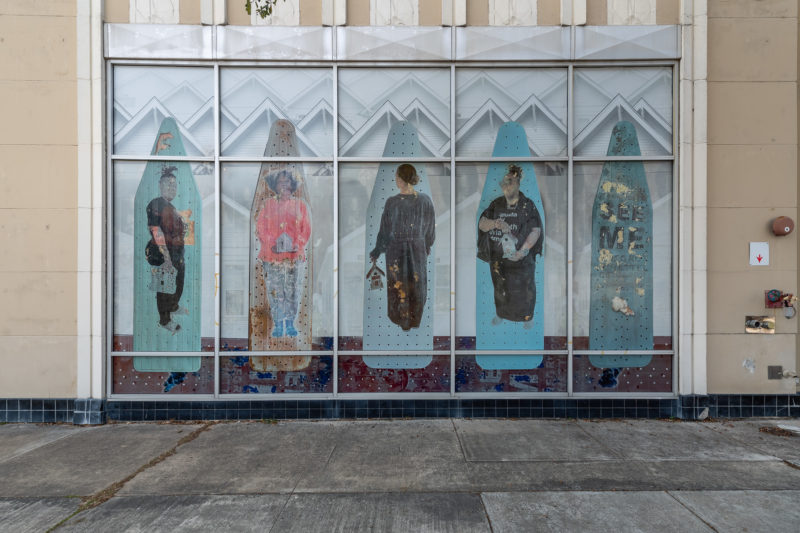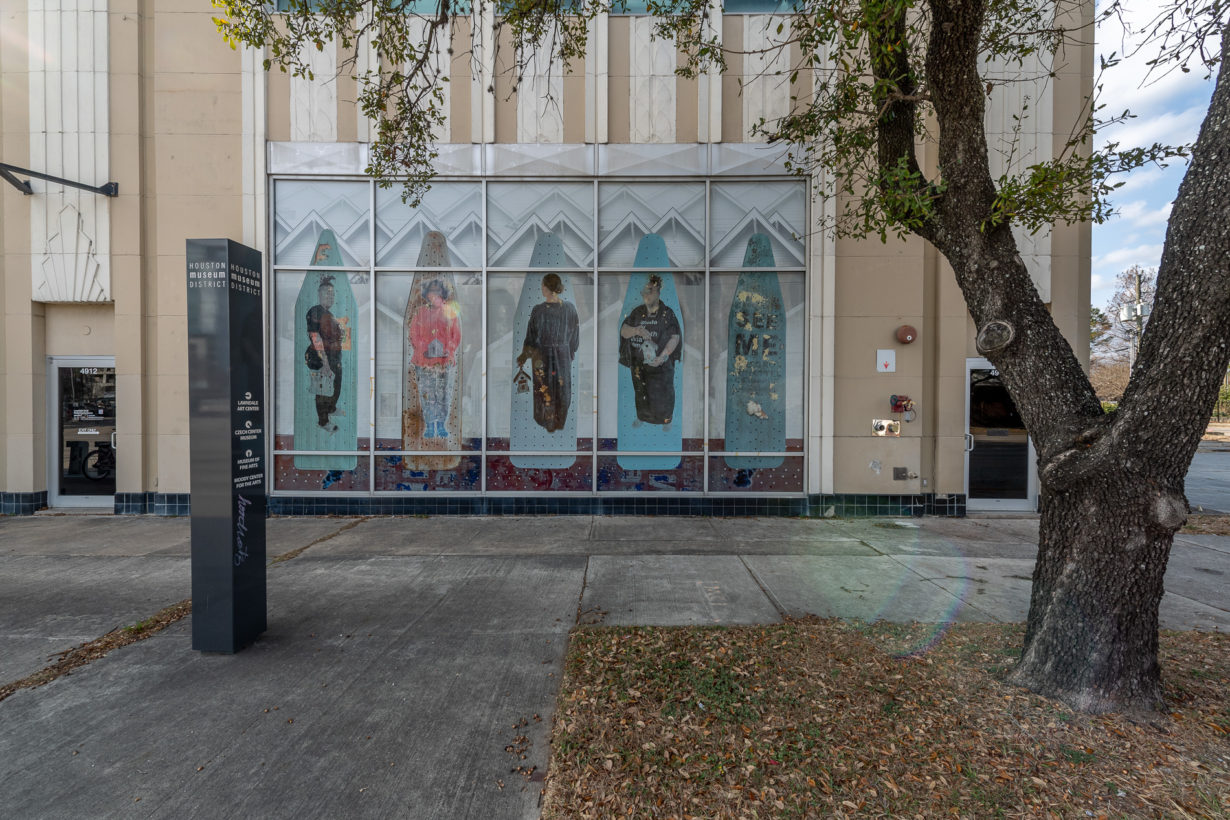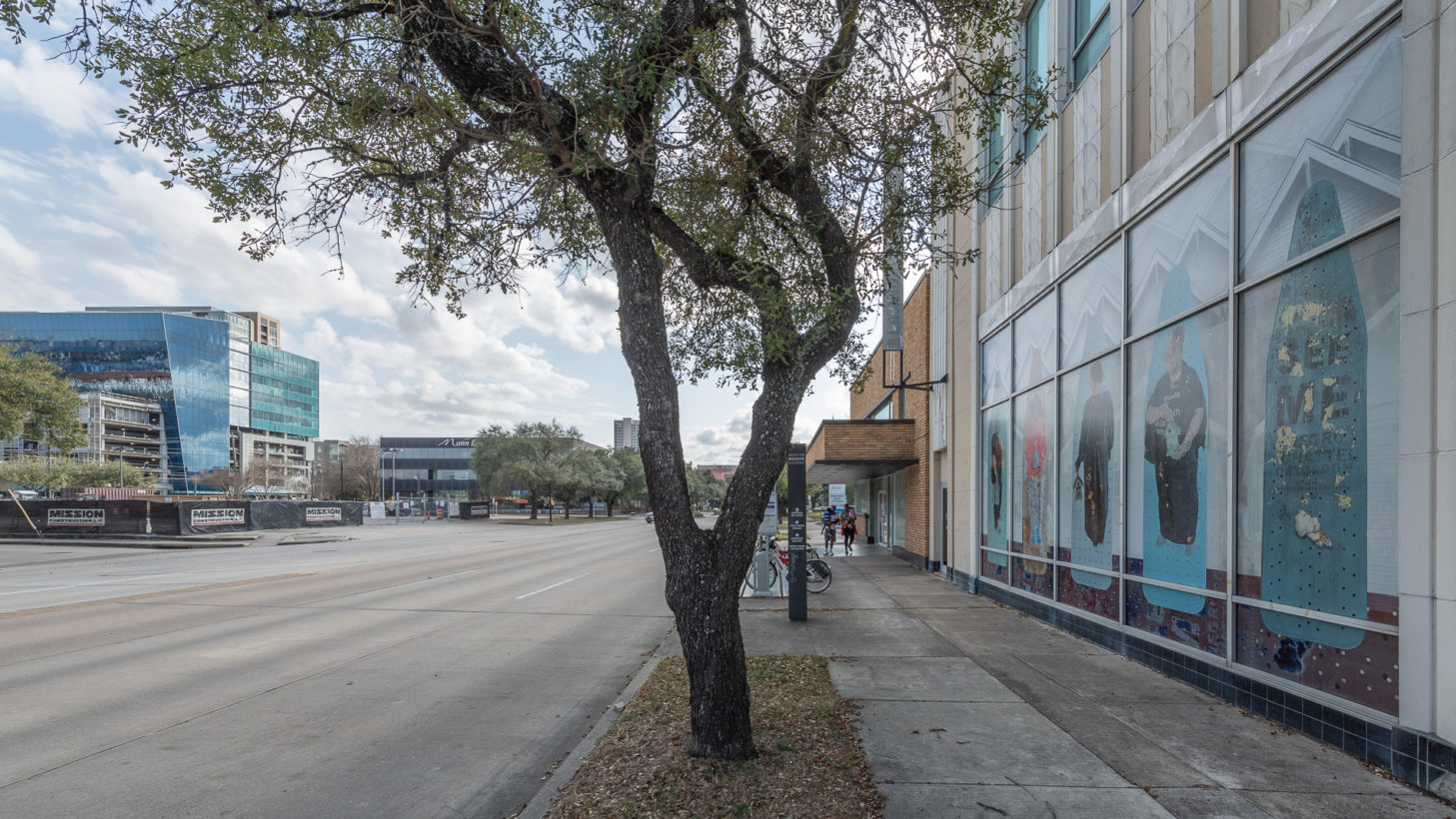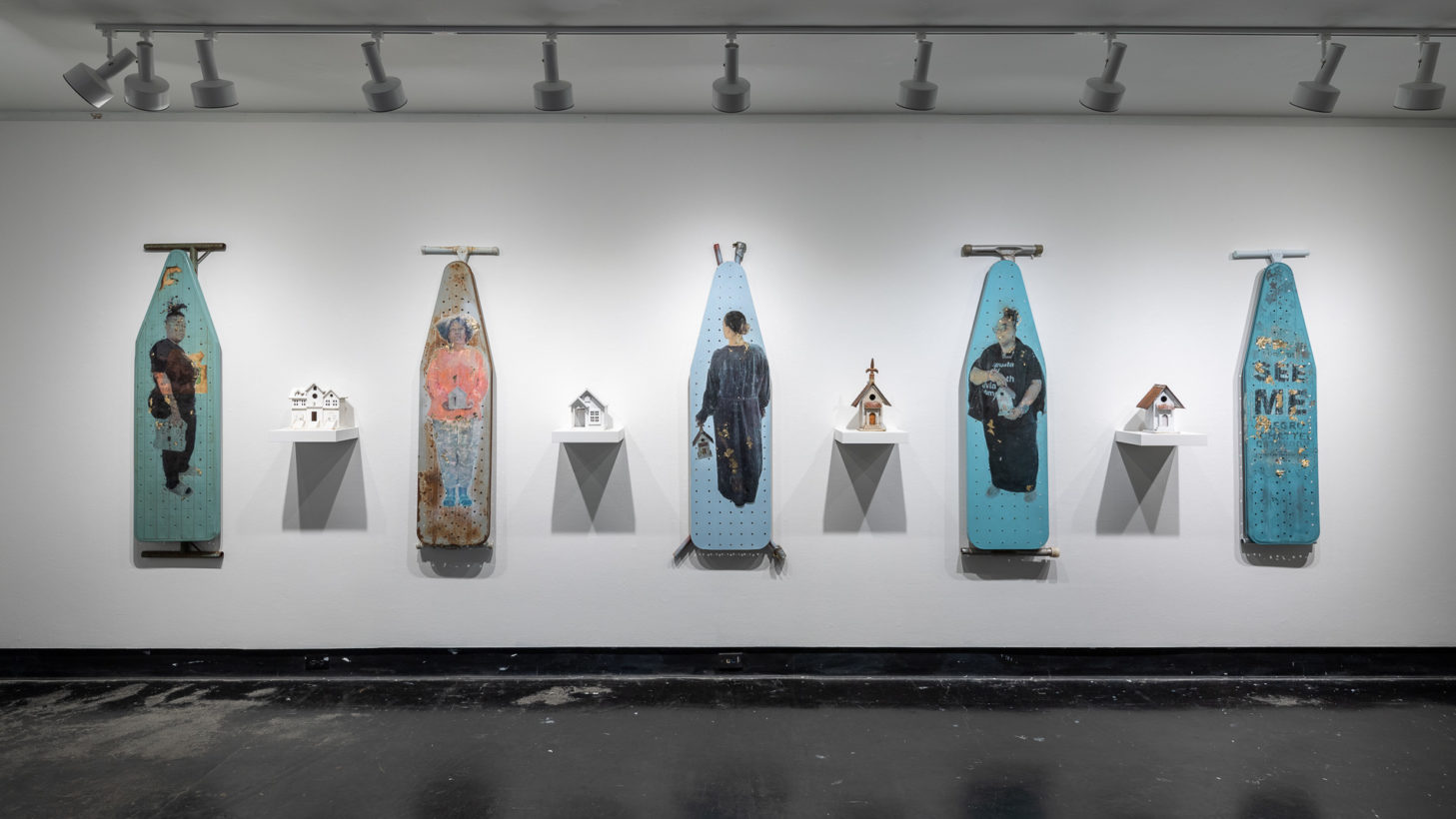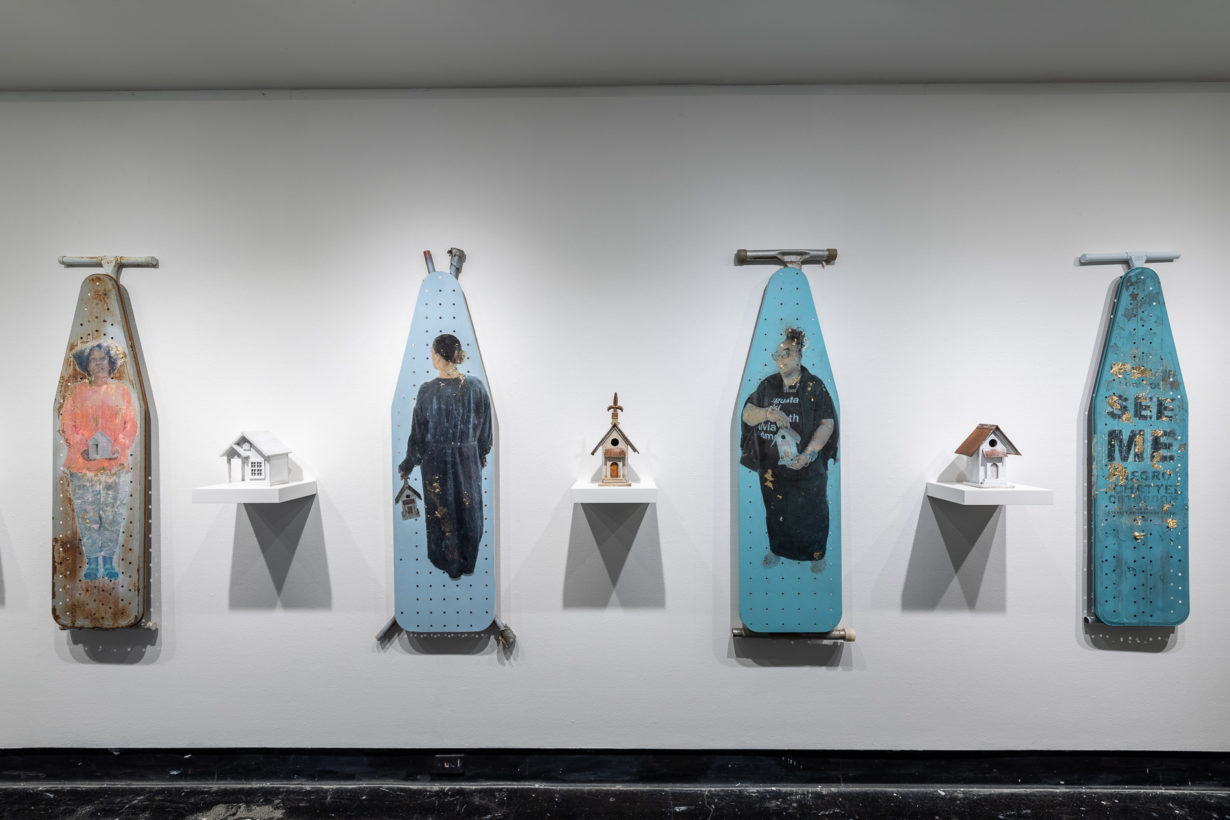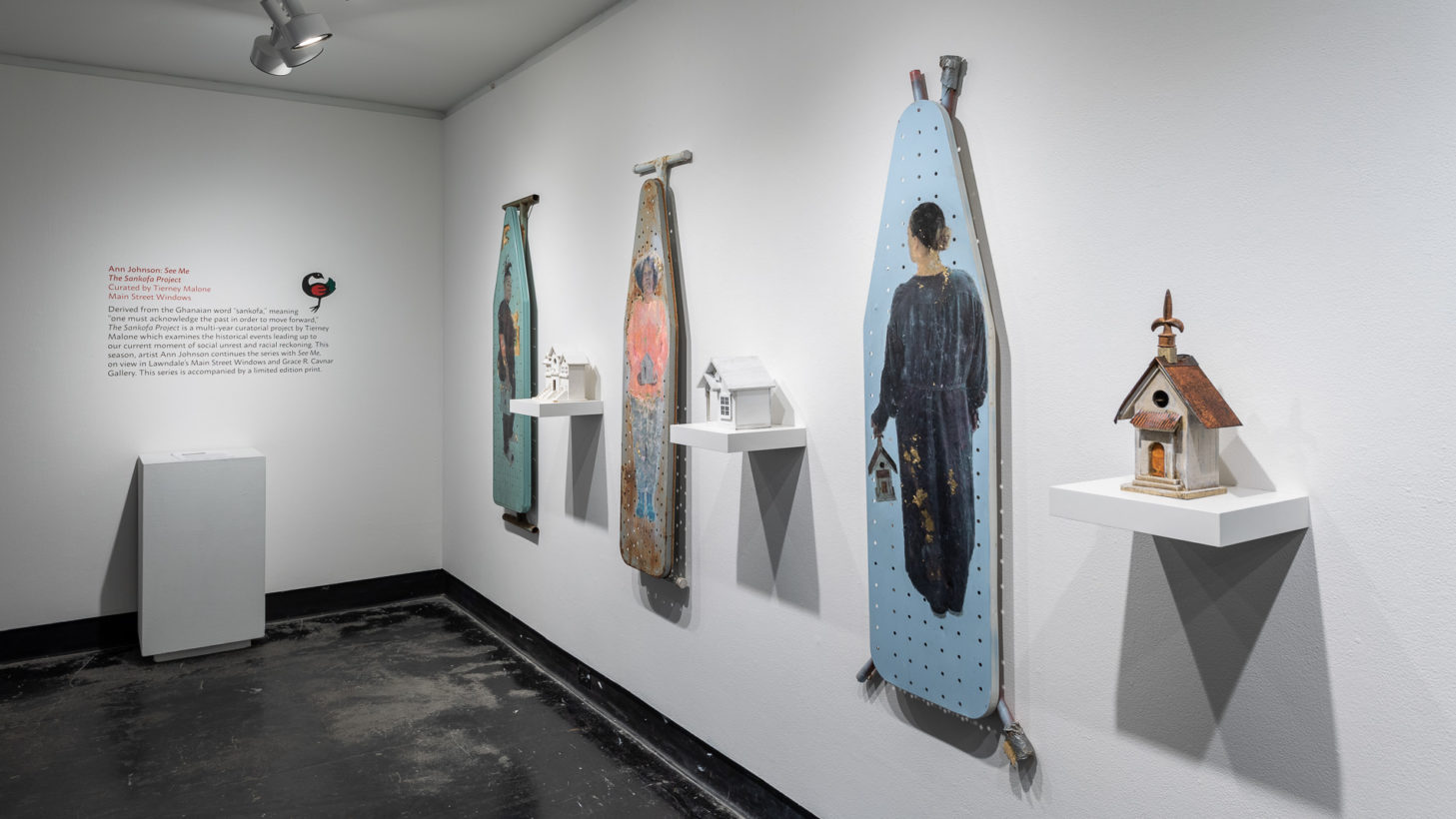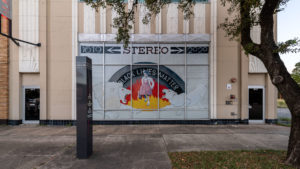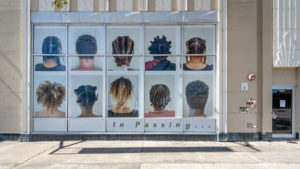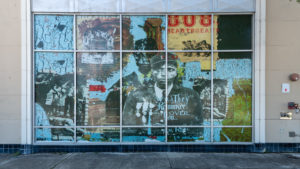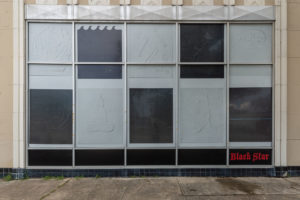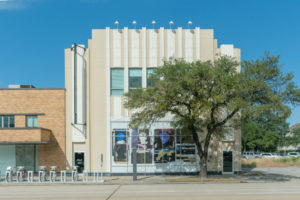
Archive
Ann Johnson See Me
The Sankofa Project
About
See Me: Sankofa Project, Artist Statement
BEING SEEN
This is about being seen. Seeing the women in the shadows. In my eyes the ironing board resembles a badge of honor. A medal for the women in the shadows. A medal of honor that so many Black women, and women of color have earned, as they had to take care of the families of others before they could take care of their own. As a physical object the ironing board is a sacred symbol that represents the back breaking work women have endured simply for survival. This installation examines family, community, and most importantly Black womanhood.
UNEARTHED. REBIRTHED. REIMAGINED. SHOTGUNS: THE REMIX
Inspired by the presence of women in the community, I have reimagined John Biggers “Shotguns (1987)” with the women of the artist collective ROUX: Lovie Olivia, Delita Martin, Rabéa Ballin, and myself, Ann Johnson (If you don’t know who we are, find out). The women of ROUX are peering at a community that is increasingly becoming gentrified, but is still the heartbeat of the black community in Houston. The 3rd Ward. Each woman in this piece represents the layers and levels of womanhood. Each portrait was created using the transfer printmaking process on vintage and aged metal ironing boards adorned with gold leaf throughout. The ironing boards in the composition act as an entrance to a shotgun house. “Dr. Biggers preached and preached and preached the meaning of this house, the fact that it was on one hand a very humble abode but at the same time it was a temple” says Alvia Wardlaw. [1]
Mimicking the original piece by Biggers, each woman is holding a replica house. Lovie is unapologetically Lovie. She defiantly holds a townhouse significant to the gentrification happening in the neighborhood that raised her. Delita unearths the women in Biggers paintings. A modern version who cradles a replica row house from the community that educated her. Rabéa swaying a church with the Fleur-de-lis honoring her Louisiana upbringing. With her back turned, which is significant to her art practice, she also addresses the assumption of her identity. She is a proud Latina. In my portrait, I am cradling a house deeply rooted in my ancestry, and wearing a t-shirt honoring the legacy of African American women in art who have birthed my existence as an artist: Augusta Savage, Vicki Meek, Elizabeth Catlett, Alvia Wardlaw, and Edmonia Lewis. It is of note that in the original piece the women are standing behind train tracks which is a significant metaphor for the separation of white and black neighborhoods. The women of ROUX are fearlessly standing on, not behind the train tracks. The African American women in Bigger’s Shotguns stand as the protectors and sustainers of their domestic temples. [2] The women of ROUX stand as protectors and key players in their own creative community.
Behind the women of ROUX, faintly seen through the houses is a young slave girl holding a white child. Again I honor the woman in the shadows. She lived a cruel life I cannot even conceive. I use this image frequently in my work, to give this woman the honor she deserves, as her cruel life was a sacrifice for the freedoms I now have. She has birthed the women of ROUX and sits behind them as a protector.
YOU CAN’T SEE HOW YOU SEE ME.
The women Bigger’s portrays in his work are often larger than life visually, as he reveals and praises their strength. Ironically it is this portrayal that leads to stereotypes of the strong or angry black woman. Bypassing her vulnerability. Bypassing her true emotions. Bypassing her need to be seen. Yes we love hard, but we hurt hard too. Josie Pickens writes of this frustration saying “…what makes me angry, is when Black women’s pain—their sadness and hopelessness—is conveniently mislabeled as anger in an effort to dehumanize and dismiss our experiences and us. [3] Unfortunately this something we live with as black and brown women, and have to learn how to navigate this way of being seen for our survival, protection and sanity.
The final board without an image speaks volumes in text. Yes it is simply asking to “See Me”, but it is laced with stars and words about how we are at times seen in the eyes of others. Negro, Octoroon, and Chattel are hard words to digest. The cotton on the board places these words in context as they rest above the placard “1619 – made in the American South”. A cotton boll from a Texas plantation finalizes this declaration.
At Pennsylvania State University, Biggers completed his doctoral dissertation in 1954 on black women after discovering “that women had produced a great deal of what we have given men credit for.” “And that’s the reason why I place emphasis on them. I think they need to be known for what they’ve done. And we don’t know this in a macho world.” John Biggers [4]
See us.
Notes:
1-John Biggers’ Art Celebrates African Symbolism, Culture
Owen McNally; Courant Staff Writer Hartford Courant, May 19, 1996
2- Shotgun Houses Gave Artist A Target
Sallie Gaines; Chicago Tribune, March 31, 1996
3-Shattering the Myth of the “Mad” Black Woman
Josie Pickens; March 31, 2016
4-Framing John Biggers’ Shotguns (1987): African American Art and Identity
Kristin Schreiber Roberts
About the Artist
Born in London, England and raised in Cheyenne, Wyoming Ann Johnson is a graduate of Prairie View A&M University in Texas, where she currently teaches. She has an MFA from the Academy of Art University, in San Francisco. Primarily an interdisciplinary artist with an affinity for experimental printmaking, she has a passion for exploring issues particularly in the Black community. Her series It Is the Not Knowing That Burns My Soul, examining the Black Indian, was included in Indivisible for the Smithsonian’s National Museum of the American Indian. She’s been featured in the New York Times, and the International Review of African American Art. She has exhibited at The Museum of Fine Arts Houston, TX, Smack Mellon in Brooklyn, NY, Women and their Work in Austin, TX, and the California African American Art Museum in Los Angeles, CA. Johnson is represented by Hooks Epstein Galleries, in Houston, TX, and Spillman Blackwell in New Orleans, LA.
About The Sankofa Project
Curated by Tierney L. Malone, The Sankofa Project is a multi-year examination of the historical events leading up to our current moment of social unrest and racial reckoning. Beginning with the people and stories that make up our own communities of Houston, this project aims to bring light to the events that have been censored or ignored in historical narratives in order to reinforce the racial oppression of Black Americans.
The Sankofa Project will commission three artists annually to create and present new work that is reflective of their own experience in contemporary America and related to the work of scholars and historians who are leading conversations on race and inequality. The artists’ work will be presented in Lawndale’s east-facing windows on Main Street and accompanied by a podcast and public program to inspire dialogue within our community.
“Sankofa” is the Ghanaian word most commonly translated as “one must acknowledge the past in order to move forward.” Thus, in The Sankofa Project, Malone brings together artists and our community to reflect upon the past, reminding us of the power of art to serve not only as the language of humanity but also its catalyst for change.
This program is funded in part by the City of Houston through Houston Arts Alliance.
About the Curator
Tierney L. Malone is a visual artist and modern day storyteller who uses the canon of African-American history and pop culture to create mixed media works that challenge contemporary culture and politics.
Malone has exhibited his art widely throughout Texas and the United States, including numerous solo exhibitions. His works are in the permanent collection of the Museum of Fine Arts, Houston; the Kansas City Jazz Museum, Kansas City, Missouri; Goldman Sachs, New York, New York; and the Federal Reserve Bank, Houston, Texas. He is the recipient of the Louis Comfort Tiffany Foundation Grant, a CACHH Visual Artist Grant, and a Kimbrough Visual Artist Grant.
Collaboration with the jazz community is also at the forefront of Malone’s practice, including commissions to create the jacket covers for jazz musician Don Byron’s 1999 CD, Romance of the Unseen, on the Blue Note Label and for jazz pianist Randy Weston’s 2003 performance at the Miller Outdoor Theater. In 2008, Malone completed two jazz-related major commissions: a limited edition print celebrating Da Camera of Houston’s 20th Anniversary and an outdoor mural entitled “Southern Sounds” for the Coleman Art Center in York, Alabama. Additionally, Malone is the creator of the Jazz Church of Houston and the host of the Houston Jazz Spotlight on 90.1 KPFT, both of which recognize and preserve Houston’s remarkable contribution to the musical genre of Jazz.
Born in Los Angeles and based in Houston’s historic Third Ward, Malone was raised in Mississippi and Alabama and considers himself a Southern Seed.
